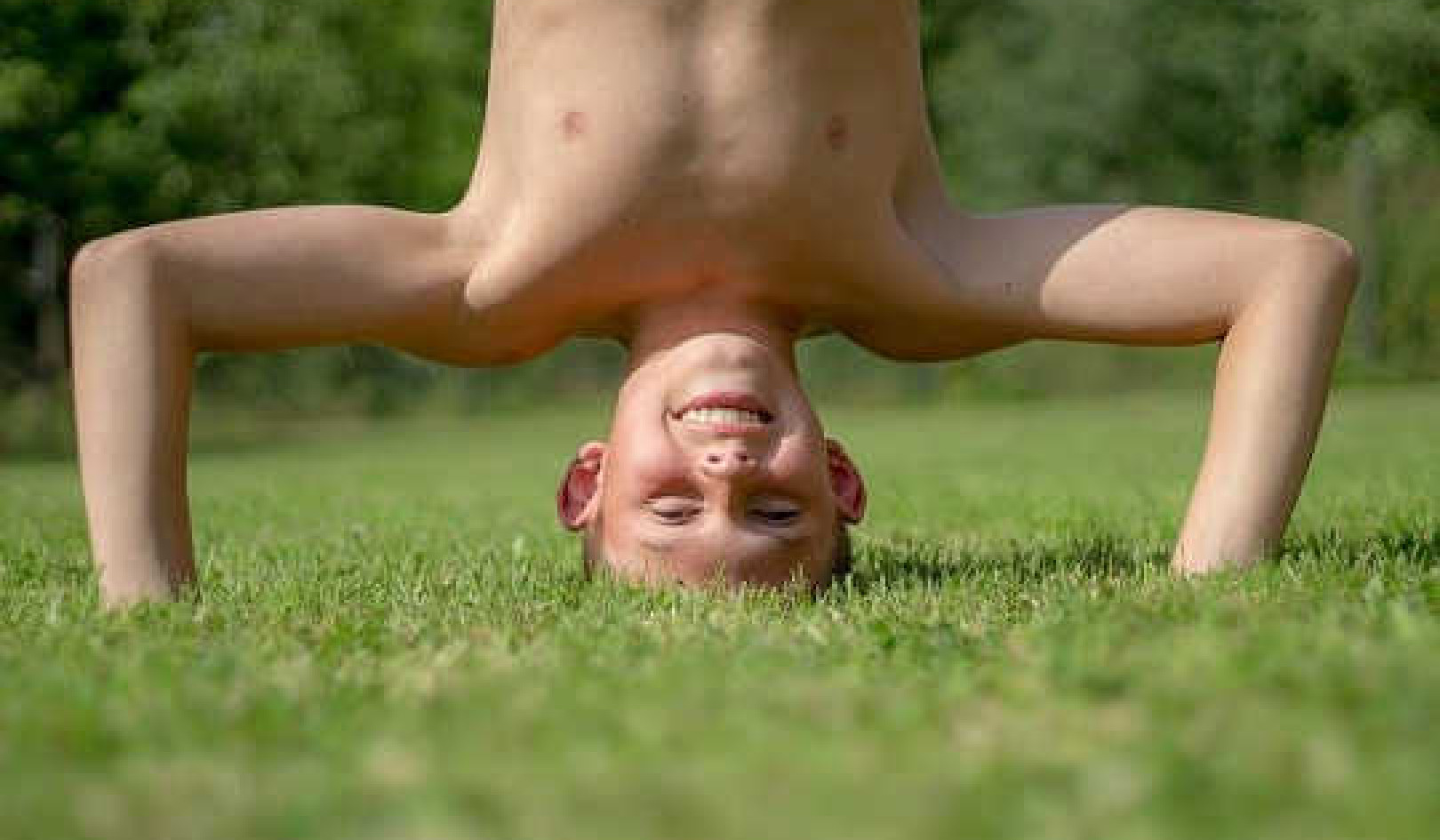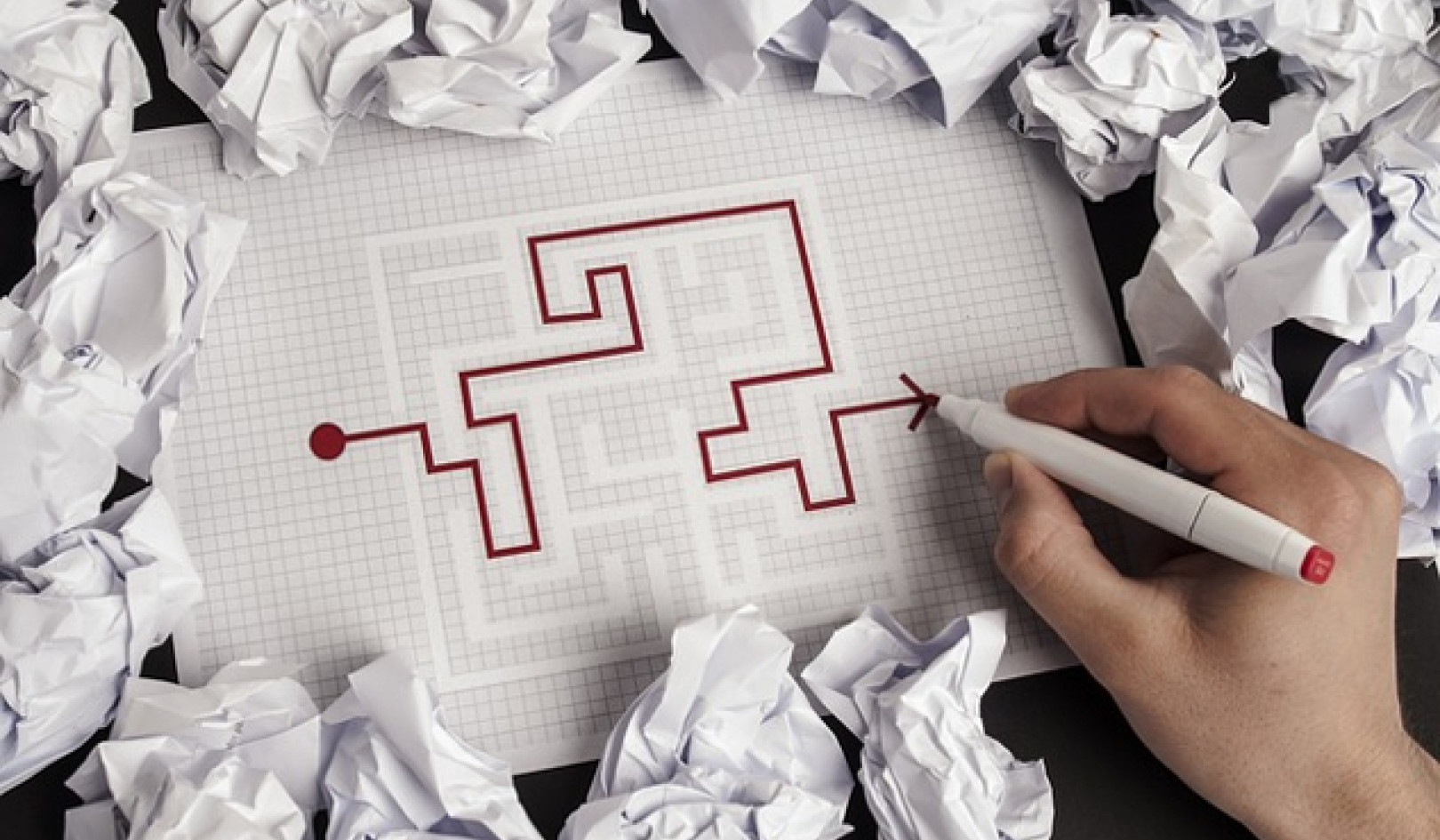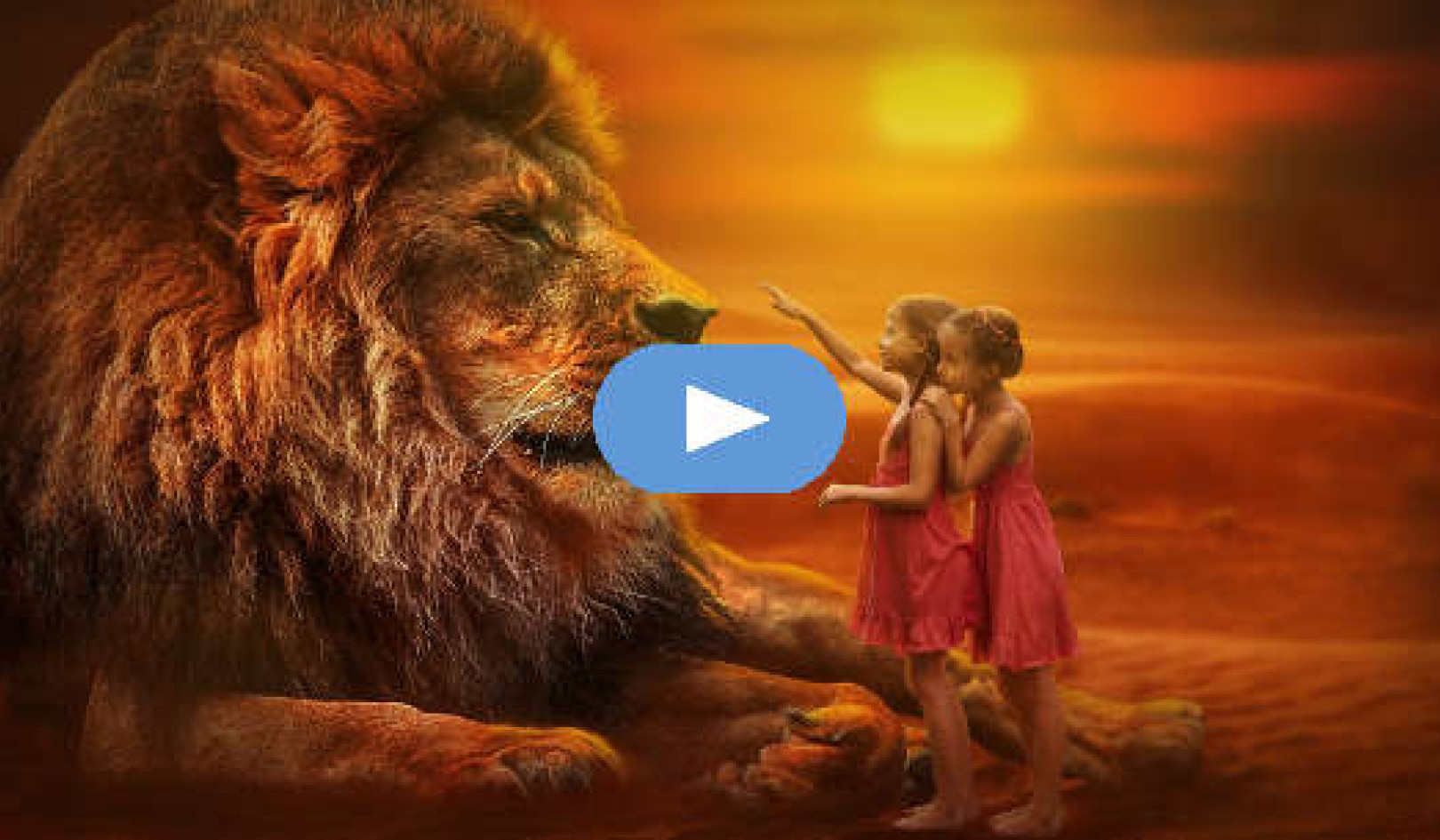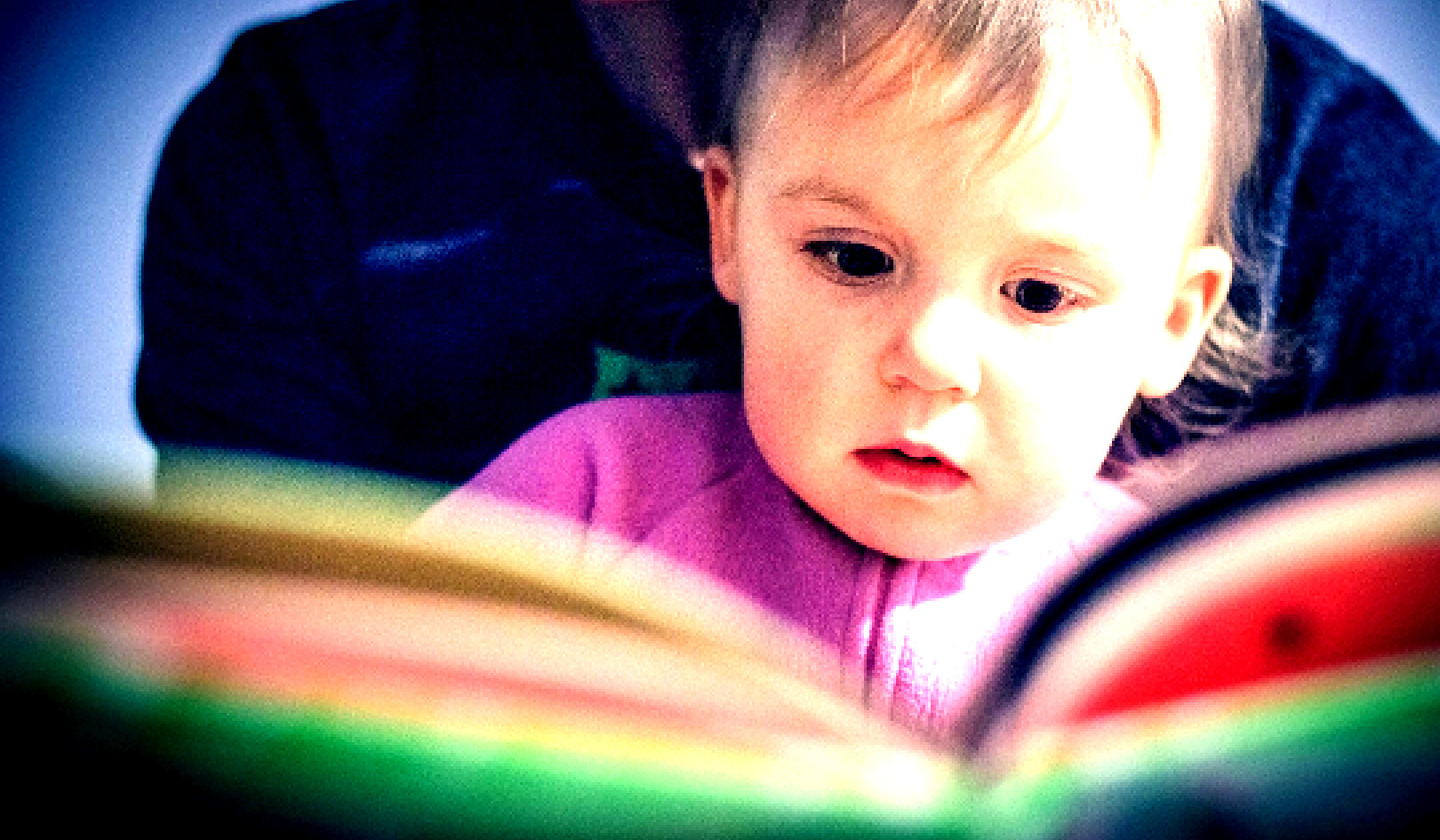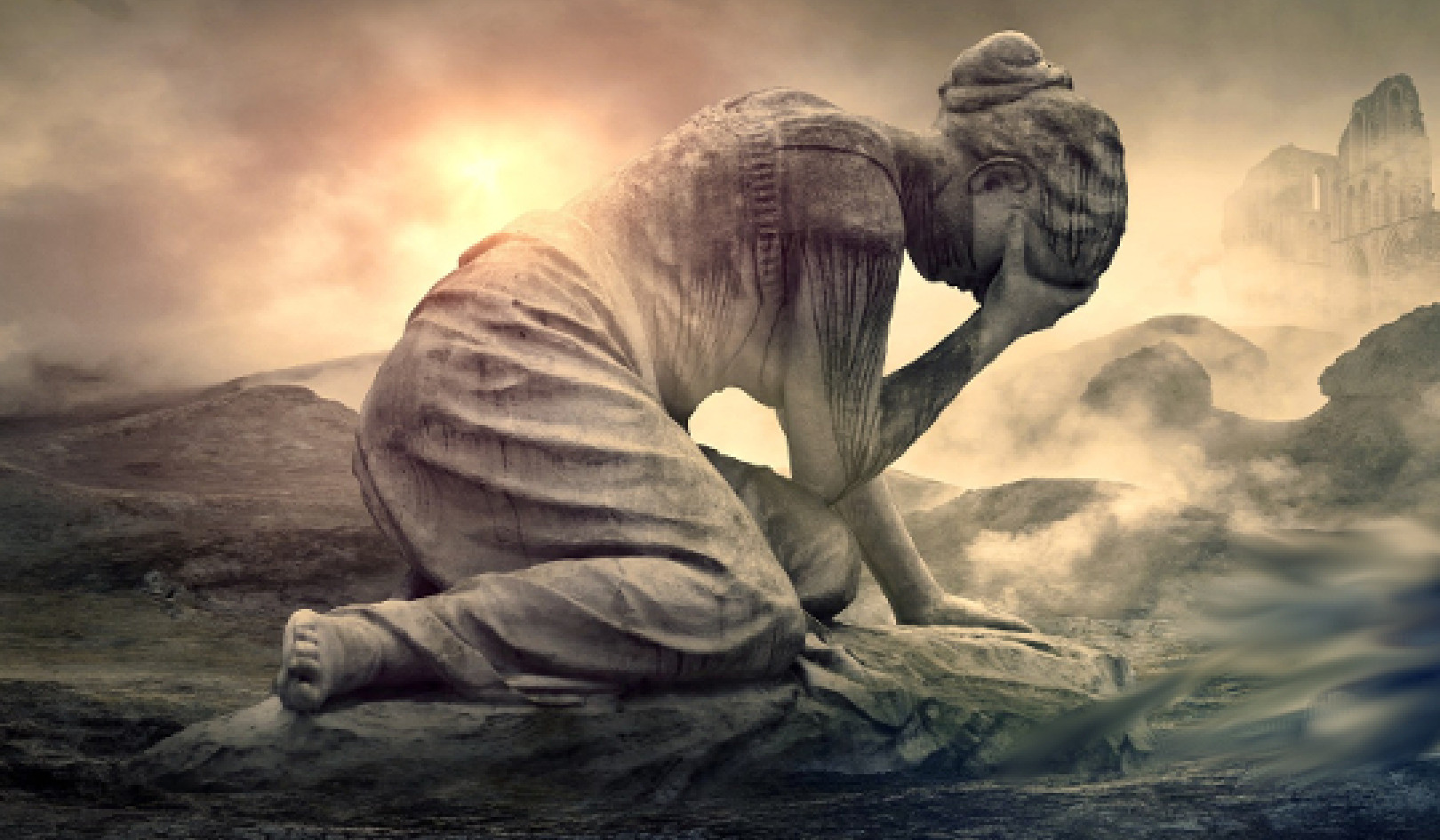
Image by Michael Engelnkemper
In my teaching, I develop and work with a variety of Earth-connected spiritual practices. Evaluating these practices through qualitative studies, I have developed three progressive phases of practices that effectively grow Earth-connected sensitivities. While there are many different practices available to complete each step, the combination of the steps consistently creates a shift in perspective, which produces experiences of healing and rebalancing within the web of life.
Even after short rituals, students and workshops attendees consistently express surprise at their very new kinds of perceptions. In my longer workshops and trainings, people marvel at the expansion of their non-cognitive and intuitive intelligence. They discover magic and wonder in interwoven waves of what I think of as meta-synchronicities; flashes of the underlying non-linear, non-local vibrational fabric of the universe. Things begin to happen that cross the boundaries of time and space.
Recently, a student said, “You did something to me. My dreams are so wild now.” I didn’t do anything. It’s waking up to our genetic sensitivities to the Earth and spirit realms — waking up from separation — that changes lives.
The Three Steps of Earth Spirit Dreaming
I call the three steps of Earth Spirit Dreaming Earth-connecting, Spirit-connecting and Dream-connecting. In the first step, Earth-connecting practices help readers develop an awareness of embodied connection with the Earth community through mindfulness of our source. Consistent practice of Earth-connecting rituals opens doorways to what we think of in Western culture as “altered” states of consciousness, or extrasensory perception.
These states of consciousness lead to the next step in the process, which is spirit-connecting. In this book, spiritual connection means experiences of being part of something larger than ourselves that take us to the level of awe.
In indigenous cultures, perception of “spirits” often means something different than it does in Western cultures. Spirit can be a way of explaining a normal part of life, rather than a different form of reality. This “spirit” realm is, in part, an expression of aliveness: a sensitivity to the energetic imprint of other beings.
In the third step, the dream-connecting practices guide readers through practices that awaken the symbolic realms of experience. Dreaming, in the lexicon of this book, can be understood as a form of visioning. Some indigenous cultures refer to visioning, or creating reality through focusing on certain things and living into the realm of stories, as dreaming. Through the dream-connecting practices, readers are invited to relate to the imaginal realms in ways that are often limited by a focus on rational thinking. The dreaming, or visioning, exercises in this book support understanding of the role of focus and creative visualization in shifting our lives and the world. Dreaming in this method also asks of us a new level of commitment to living mindfully with our own stories, which inform all of our beliefs and actions whether we are conscious of them or not.
Dreaming for the healing of the Earth requires unprecedented, moment-by-moment attention to what we think and feel as a result of our stories — personal, familial, cultural, global — and how these stories inform our creation of reality as we know it. Awake dreaming is not for the faint of heart; it can be rigorous, wild, surprising, painful, exhilarating beyond imagining. And, it often takes us beyond boundaries that we previously did not know existed. Becoming conscious dreamers is an initiation, and a way to become fully human; it is a path to engaging with the world as harbingers of a healing planetary consciousness.
Earth-Connecting Practices
The Earth-connecting practices reconnect us with our bodies and the Earth. Our bodies hold sensitivities that allow us to consciously engage with the Earth community. Reconnecting with nature, and with our bodies, enlivens dormant, often atrophied, senses. Rediscovering what ecopsychologist Michael J. Cohen calls “natural senses” helps us to become mindful of the web of relationships that surrounds us in every moment of our lives. These practices focus particularly on the ecological web of relationships that we rely on for life on Earth. [Michael J. Cohen, Reconnecting with Nature]
Understanding insights from ecology can transform our individual lives. The single most important idea from ecological thought is that everything is connected. While this idea can be expanded upon with great detail, the central seed of the idea is that everything can best be known and understood in relationship.
Ecology deals with the study of organisms in relation to one another, and to their environment. Translated to a personal level, ecology tells us that, as it is in nature, so it is in our own lives; in an ecological framework, we can understand ourselves best in the composition of our own environment. The social sciences, and psychology, contextualize human life within our human environments. Visionary ecological thought tells us that to be in balance with the Earth, we must understand and develop healthy relationships within our more-than-human environment as well.
Humans are part of nature, but we are only one part. Cutting ourselves off from the whole of life on Earth, and only focusing on a small part, the human world, has created profound imbalances for our species and the planet.
Combining ecological thought with mindfulness, we can learn to focus on and become present to our ecological reality. Deep ecologists call this capacity the ecological self. I consider this a form of spiritual development, as the experience of the ecological self creates consciousness of our part in something larger than ourselves. For framing of the practices in this book, we can think of this larger “self” on Earth as Gaia.
People refer to Earth as Gaia for a variety of reasons, including spiritual, archetypal and scientific to name a few. In Greek mythology, Gaia is Earth personified in the form of a goddess, the ancestral mother of all life on the planet. Scientist James Lovelock, in his now famous Gaia Hypothesis, argues that the biosphere is a self-regulating organism that organizes and perpetuates all planetary systems. [Gaia: A New Look at Life on Earth]
Lovelock’s Gaia Hypothesis helped transform the destructive, industrial model of the Earth, which conceives of nature existing primarily for our use. His thinking supports an ecological model of nature by showing that the Earth has her own ends and intrinsic value, which require our honor and respect.
Mindfulness and Ecological Consciousness
I incorporate mindfulness techniques in many of the practices that develop ecological consciousness because they offer simple and proven ways to slow down the mind and awaken the senses. Mindfulness, like fields in philosophy such as phenomenology, invites us to live deeply into the present moment.
What I call “ecomindfulness” employs mindfulness techniques to help us live deeply into our ecology. Because we are part of nature, we do not need to be in natural settings as they are commonly understood to become more present to the role of nature in our lives.
Nature is our lives. We are nature. Nature is with us every moment: in our breath, our blood, our cells, the water we partake of and are made up of, our use of stored sun as energy and all of our life processes, inside and out. We are life and cannot exist without the complex matrices of life. Becoming mindful of this and learning to hold the reality of embeddedness in nature is undoubtedly easier if, at first, we take ourselves to a beautiful place “out in nature,” in the sense of unspoiledness that we tend to associate with “natural” places.
As we grow in this ability, we find that we are in fact “in nature” at all times and in all places; but some places are more degraded by human insensitivity and overuse than others. As we wake up our mindfulness and aesthetic connection to the patterns and design of “nature,” places that have been overtaken by the human mind and that have no proper balance with nature can start to feel very dead and can elicit strong feelings of sadness and grief. These feelings of grief are, though, part of ecomindfulness and are an essential element of the process of reclaiming our birthright as humans: understanding and sensing on all levels of our being our place in the web of life. Joanna Macy’s work addresses the importance of this process of grief in our waking up to the world.
Spirit-Connecting Practices
The second step of Earth Spirit Dreaming requires practices that deepen our spiritual perceptivity. Many of the practices in the Earth- and body-connecting work above can also be defined as spiritual. They include creating a sense of the sacred in our lives, learning to foster awe and reconnecting with the Earth community. The Earth Spirit Dreaming practices use the reawakened sensitivities to the natural world that are developed in the first step to support working with energetic and vibrational reality.
In order to “dream,” or to vision, from a frame of mind that is conducive to connection and healing, we must first learn to clear ourselves of destructive “vibrational” entanglements. There are many ways to understand unhealthy entanglements that do not require thinking in terms of energetic, or vibrational, reality.
It is important to learn to understand and work with these kinds of experiences, even if they seem “not real.” In fact, it’s equally useful to only “imagine” that we are working with energy and vibrations.
Imagination: An Essential Tool
Imagination is an essential tool for reconnecting with and re-dreaming our world. Through visualization and imagination, we can open to life-changing experiences of oneness. Often, our minds cannot follow where our bodies and hearts lead. Our minds are ill-equipped to act as containers of relational consciousness. Yet, “the watcher,” the fully integrated, multidimensional consciousness that each of us has, can support the profundities of relational reality. It is through re-threading ourselves within the weave of the matrix of life that we move into our full capacities as humans.
As we slow down and connect with nature, our nature and the nature all around us, even in the city, we can find our way to an innate knowledge of subtle realms that many people in Western culture have forgotten. As we tune in to these realms of vibration, we can learn to clear vibrations that hold us in thrall to ways of living, creating and dreaming that are out of balance with our own well-being and the Earth.
Our soul self, the self that exists as part of something larger than our ego, wants to live in balance, peace and harmony with all of life on Earth and in the cosmos. Coming into alignment with the Earth helps to bring us into alignment with this soul self, where we find a sense of balance, fulfillment, peace and purpose previously unknown to us. While we can still acknowledge great sadness for the pain of the world, we can find a way to create harmony through visioning health and life-giving energy for all beings and for the planet. We learn to become conduits of healing for life, rather than pulling energy from life and continuing to drain the resources of the spirit of Earth.
Typically, without knowing it, many of us are pulling energy into ourselves with unconscious wanting, needing and taking. Even if we have done a lot of work on ourselves, and are relatively psychologically healthy, the habit of mind, body and heart that comes from the dominant global culture encourages us to fear, to strive, to worry and to plan for our survival — to pull energy into ourselves. This habit is often so ingrained that it requires daily practice and continual vigilance, as well as a lot of soul searching, to learn another way: to be in a position of energy-giver rather than taker. As we work on this, though, we can begin to stay in a place that allows us to live and to dream our reality from a place of trust, joy and gratitude.
Dream-Connecting Practices
What we most often think of as “visualization” in Western culture is thought of as “dreaming” in some indigenous cultures. In this context “dreaming” is a form of co-creation in our daily lives (a related concept in Buddhism is the idea of dependent co-arising). Groups such as the Pachamama Alliance see changing our collective dream in Western culture as essential to healing our world.
According to the indigenous elders who inspire the work of the Pachamama Alliance, what we see and envision, we create. In keeping with this indigenous perspective, I’m referring to visioning as dreaming, since I too believe that our lives on Earth are in some sense a dream, or a collection of stories, that we can heal and change.
Healing the Dream of the Earth
What does it mean to heal the dream of the Earth? First, to own our power for creating life as it is. We have tremendous power, through every thought and action, to create the dream that we live in. This idea can seem beyond irrational, and even crazy, to the Western-trained mind. We are taught to believe that reality is objective, something that exists “out there” and on its own. The ecological paradigm teaches us that, since everything is connected, reality is essentially relational and thus malleable along the porous borders and criss-crossed patterns that exist between forms of life.
We know from Heisenberg’s uncertainty principle, from the field of quantum physics, that we are always partaking in how reality appears to us. The dense, physical reality all around us is made up of the collective dream of many people, and the planet, over long periods of time. To dream a new way of life into being, we must collectively wake up and “come to our senses.”
Those of us who consciously work for the healing of the world encounter seemingly endless people pouring their care and creativity into healing the world in remarkable ways. There are millions of organizations all over the world, each, in their own diverse ways, connecting with their own land and people, cultivating local economies, growing their own food and working for social justice. Paul Hawken, in his book Blessed Unrest: How the Largest Social Movement in History Is Restoring Grace, Justice, and Beauty to the World, chronicles this rapidly growing movement. Hawken identifies the power of small, individual changes when seen as a web of change encompassing the planet:
How do we sow our seeds when large, well-intentioned institutions and intolerant ideologies that purport to be our salvation cause so much damage? One sure way is through smallness, grace, and locality. Individuals start where they stand and, in Antonio Machado’s poetic dictum, make the road by walking.
Rather than ceding the power to create the vision of the world to those who we think of as “in power,” the Earth Spirit Dreamingpractices encourage us to become lucid dreamers creating a new story of justice, peace, harmony, creativity, beauty and love. We can create a new dream that honors all of life at every level.
Sound like a “pipe dream?” Yes, maybe sacred pipes, and indigenous ways, can help us get there. In every pocket of pain and darkness on the planet, there are blooming lights of dreamers building a web of transformation. We are a web of light, working for life; we are creating a healing dream for the Earth.
©2020 by Elizabeth E. Meachem, Ph.D. All Rights Reserved.
Excerpted with permission from the book: Earth Spirit Dreaming.
Publisher: Findhorn Press, a divn. of Inner Traditions Intl
Article Source
Earth Spirit Dreaming: Shamanic Ecotherapy Practices
by Elizabeth E. Meacham, Ph.D. Illuminating a shamanic awakening within Western culture at the dawn of an ecological age, Earth Spirit Dreaming reveals how the birth of a global consciousness of healing depends upon our commitment to individual and collective spiritual evolution. Calling us back to our shamanic heritage of a living nature spirituality, this manual offers much needed guidance on the essential journey back to an intimate love of Earth.
Illuminating a shamanic awakening within Western culture at the dawn of an ecological age, Earth Spirit Dreaming reveals how the birth of a global consciousness of healing depends upon our commitment to individual and collective spiritual evolution. Calling us back to our shamanic heritage of a living nature spirituality, this manual offers much needed guidance on the essential journey back to an intimate love of Earth.
For more info, or to order this book, click here. (Also available as a Kindle edition and as an Audiobook.)
About the Author
 Elizabeth E. Meacham, Ph.D., is an environmental philosopher, teacher, healer, spiritual mentor, and musician. She is the founder and codirector of the Lake Erie Institute for Holistic Environmental Education. Her workshops and training courses offer initiatory experiences that reflect her long-term engagement as a student of the Earth and Cosmos. Visit her website at elizabethmeacham.com/
Elizabeth E. Meacham, Ph.D., is an environmental philosopher, teacher, healer, spiritual mentor, and musician. She is the founder and codirector of the Lake Erie Institute for Holistic Environmental Education. Her workshops and training courses offer initiatory experiences that reflect her long-term engagement as a student of the Earth and Cosmos. Visit her website at elizabethmeacham.com/





















